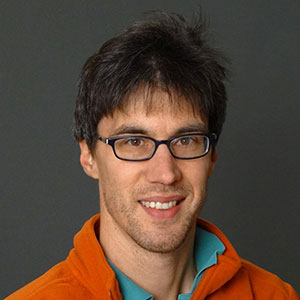Robert B. Best, Ph.D.

Professional Experience
- United Kingdom Royal Society University Research Fellow, University of Cambridge, 2007–2012
- Ph.D., University of Cambridge, 2003
- M.Sc. University of Cape Town, 2000
Current Research
The broad goal of my work is the development of novel simulation methodology and theory for better understanding protein function and evolution. Specifically, we are interested in following interrelated topics: the molecular mechanisms of protein folding, protein misfolding and protein aggregation, and in the properties and function of intrinsically disordered proteins. We are also interested in the evolution of sequences which fold to stable structures. Our aim is to help to interpret experiments and to answer questions which would be very difficult to directly address experimentally.
Recent work has focused on the following:- design of protein sequences using evolutionary information
- co-translational protein folding
- the optimization of protein force fields using empirical data for peptides and macromolecules in solution;
- interpretation of single-molecule fluorescence or and small-angle X-ray scattering experiments using simulation and theory;
- coarse-grained master equations as a tool for interpreting peptide dynamics in simulations;
- diffusion models of protein folding;
- development of coarse-grained models for protein association and phase separation
- methods for identifying cryptic binding pockets in proteins.
To view more about my research, visit my lab's website.
Select Publications
- On the role of native contact cooperativity in protein folding.
- Wang D, Frechette LB, Best RB.
- Proc Natl Acad Sci U S A (2024 May 28) 121:e2319249121. Abstract/Full Text
- Extreme dynamics in a biomolecular condensate.
- Galvanetto N, Ivanović MT, Chowdhury A, Sottini A, Nüesch MF, Nettels D, Best RB, Schuler B.
- Nature (2023 Jul) 619:876-883. Abstract/Full Text
Research in Plain Language
I use computational methods to study the function of large biological molecules. For example, we are interested in learning how proteins “fold” to their native structures. Protein folding is the process by which a polypeptide chain, initially in a highly disordered state, self-assembles into a unique 3-dimensional native structure. Since the native structure is usually required for the protein to function, it is important to understand how this structure is assembled. In addition, many diseases are caused by protein misfolding, in which proteins form structures other than the native one, often by sticking to each other. Therefore, it is also important to know how such misfolding occurs and what structures are formed.
In collaboration with experimental groups, we use computational and theoretical methods to obtain new insights into protein folding and misfolding. In particular, we are interested in single molecule experiments, which we can use to resolve sub-populations of folded and misfolded states, rather than producing an average over a very large number of molecules.
